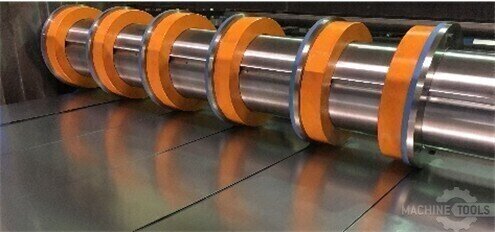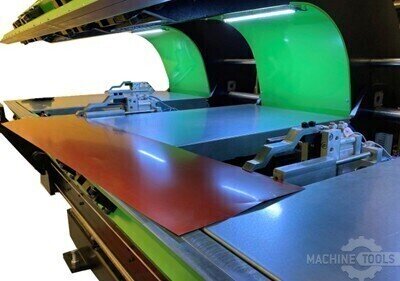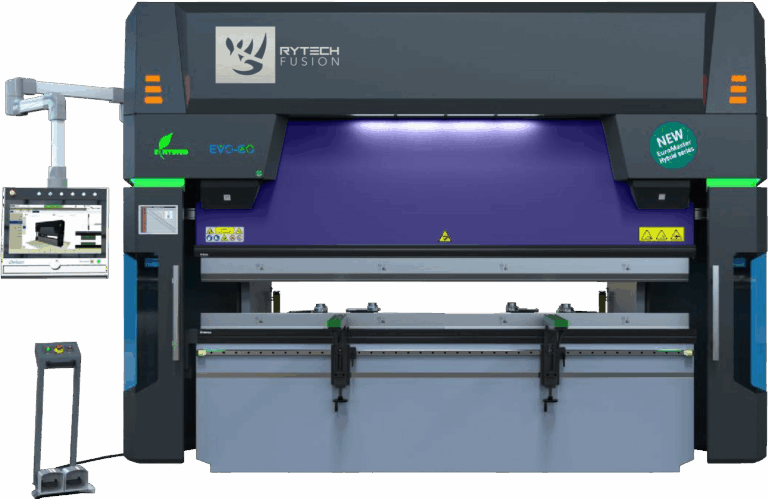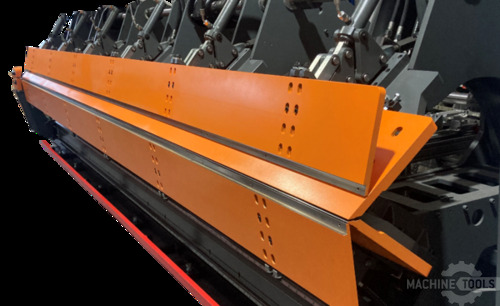For over two decades, I’ve worked shoulder-to-shoulder with shops across the Midwest—from my roots in southern Chicago to my current home base at Mac-Tech in Milwaukee. My journey has always been about putting customers first, whether it’s a family-run roofing business or a high-volume architectural fabrication plant. I’ve seen firsthand how the right equipment decisions can transform productivity, reduce waste, and give teams the confidence to take on bigger jobs. At Mac-Tech, I help clients evaluate every angle—folders, shears, slitters, decoilers, panel benders, and more—so they can build a line that truly delivers.
Leveraging Decades of Expertise in Motorized Folder Upgrades
Today’s metal fabrication market demands more than just reliable machines—it demands adaptable, high-performance solutions that keep pace with evolving customer needs. Many shops rely on powered folders that have served them well for years, but as technology advances and expectations rise, these workhorses can become bottlenecks. My role as Regional Sales Executive is to help you identify where your folder is holding you back and chart a clear path toward higher efficiency and profitability.
Identifying Common Bottlenecks in Coil-Fed Metal Folding Operations
Older motorized folders often develop subtle performance issues that aren’t always obvious right away. You might notice inconsistent bends, an uptick in scrap rates, or slower changeovers between profiles. Sometimes, it’s a matter of outdated controls or worn mechanicals; other times, the folder simply can’t handle the new materials or tighter tolerances your customers expect. Common bottlenecks include:
- Inconsistent folding angles due to worn clamping beams or drive systems
- Manual setup times that eat into production hours
- Limited automation, forcing skilled operators to spend time on repetitive adjustments
- Material handling inefficiencies between coil, slitter, and folder stations
Evaluating Your Current Folder: Performance, Waste, and Production Speed
The first step is a clear-eyed evaluation. Gather data on your folder’s cycle times, reject rates, and maintenance logs. Are you seeing more downtime or inconsistent results? Is your waste creeping up? Compare your output with newer machines, factoring in labor hours and material costs. I often walk customers through a productivity audit: How many setups per shift? How many feet of product per hour? Where are the slowdowns? This process highlights not just the folder’s limitations, but also opportunities for broader line optimization—sometimes a new slitter or decoiler can be just as impactful.
Troubleshooting Aging Motorized Folders: Pat’s Proven Diagnostic Approach
When a customer calls about folder issues, I start with a systematic diagnostic:
- Check for mechanical wear: Inspect clamping beams, pivot points, and drive assemblies for signs of fatigue or misalignment.
- Review controls and electronics: Outdated PLCs or relay logic can cause erratic performance. Software upgrades may resolve hidden inefficiencies.
- Assess material compatibility: Newer alloys or coated materials may stress older machines beyond their design.
- Evaluate operator workflow: Are staff compensating for machine quirks? Excess manual intervention is a red flag.
- Benchmark against current needs: Has your product mix changed? Are you running more profiles or shorter batches?
With these insights, I can recommend targeted repairs, retrofits, or—when justified—a full upgrade.
Upgrading for Precision: Addressing Slitting, Forming, and Folding Challenges
Precision is the name of the game. Modern servo-driven folders, for example, deliver repeatable accuracy that hydraulic systems can’t match—especially on complex profiles or architectural metals. Upgrades might include:
- Servo or hybrid drives for smoother, faster motion
- Advanced CNC controls with recipe storage and remote diagnostics
- Integrated slitting and folding solutions for seamless coil-to-part workflows
- Automatic tool changers to minimize setup times
These features reduce operator dependency, tighten tolerances, and unlock new product capabilities.
Enhancing Speed and Consistency in Roll Forming with Modern Solutions
Today’s roll forming lines can be integrated with folders, slitters, and decoilers for a true “coil-to-product” workflow. Automation options—like robotic part handling or inline inspection—dramatically boost throughput and consistency. For shops moving beyond basic gutters or panels, these upgrades enable rapid profile changes, less downtime, and more consistent quality, even in short-run or custom work.
STEFA LCS3
Customizing Folder Solutions for Unique Fabrication Requirements
No two shops are the same. That’s why I work closely with each customer to tailor solutions—whether it’s a compact folder for tight spaces, a double-beam system for complex architectural trims, or custom tooling for specialty metals. We can integrate folders with existing roll formers, shears, or even panel benders, ensuring a cohesive, future-proofed line. My team and I handle everything from site assessments to operator training, so your upgrade is seamless.
Real-World Results: How Upgrades Reduce Waste and Boost Efficiency
Shops that modernize their folders routinely report:
- 30–50% faster production cycles
- Up to 80% reduction in setup times
- Scrap rates cut in half
- Fewer operator errors and less rework
- Easier compliance with evolving specs and codes
One recent client, a Midwest commercial roofing fabricator, cut their annual scrap costs by over $20,000 after upgrading to a CNC folder and integrated slitter—a return on investment in less than two years.
Next Steps: Partnering with Mac-Tech for Your Folder Modernization
Whether you’re troubleshooting a single folder or rethinking your entire production line, Mac-Tech brings hands-on expertise, a full range of equipment options, and a commitment to long-term service. I invite you to connect with me directly—let’s walk your shop floor, review your current challenges, and build a solution that delivers lasting results.
Frequently Asked Questions
When is the right time to upgrade a roll former or folder?
If you’re seeing increased downtime, rising scrap rates, or struggling to meet new product specs, it’s time to consider an upgrade. Often, the cost of ongoing repairs and lost productivity outweighs the investment in a modern solution. I can help you run the numbers.
How do servo-driven folders compare to hydraulic systems?
Servo-driven folders offer faster cycle times, greater precision, and lower maintenance. They’re ideal for high-mix, low-volume production or any application demanding tight tolerances. Hydraulics still have their place for heavy-gauge work, but servos are the go-to for most modern shops.
What’s the difference between a combi-beam and a double folder?
A combi-beam folder combines straight and segmented tooling for maximum flexibility—great for custom trim and architectural profiles. A double folder folds both up and down without flipping the part, boosting speed and reducing handling. The right choice depends on your product mix.
What are signs a roll forming line is no longer cost-effective?
Frequent breakdowns, high scrap rates, and long changeovers are red flags. If you’re turning away work or can’t compete on lead time, it’s time to evaluate your line. We can benchmark your operation against industry standards to identify the best upgrade path.
Can I integrate new folders with my existing slitters or decoilers?
In most cases, yes! We specialize in modular upgrades and can often retrofit new folders, controls, or automation into your current line for a cost-effective modernization.
How long does a typical folder upgrade or retrofit take?
Most upgrades can be completed in 2–4 weeks, depending on scope and required customizations. We handle everything from installation to operator training to get you up and running fast.
If you’re ready to boost your folder efficiency and future-proof your fabrication line, let’s talk. I’m always happy to schedule a walkthrough, set up a demo, or put together a detailed quote tailored to your needs. Reach me directly at pat@mac-tech.com or 414-232-7929—or use the contact form below to get started!
Get Weekly Mac-Tech News & Updates








